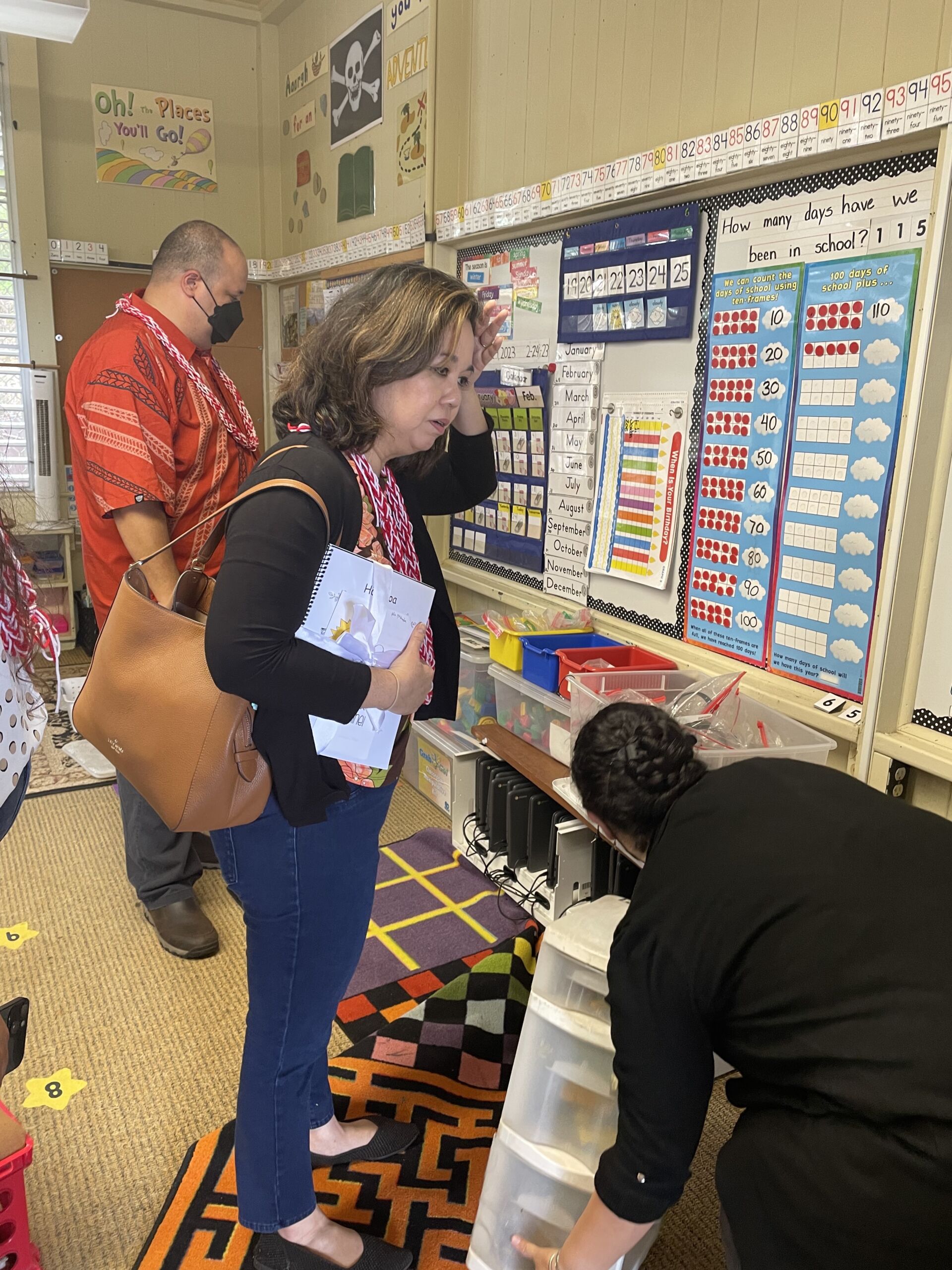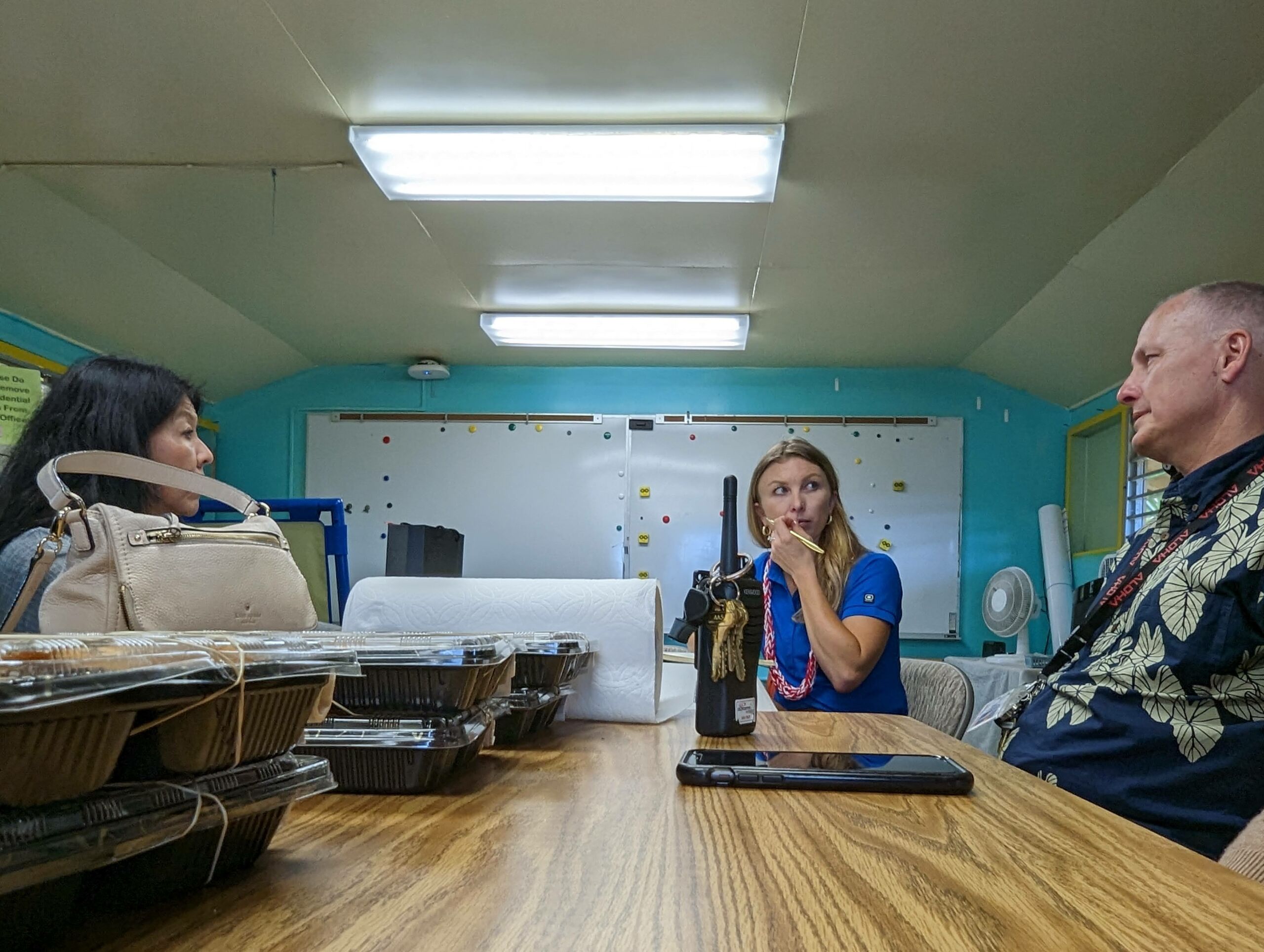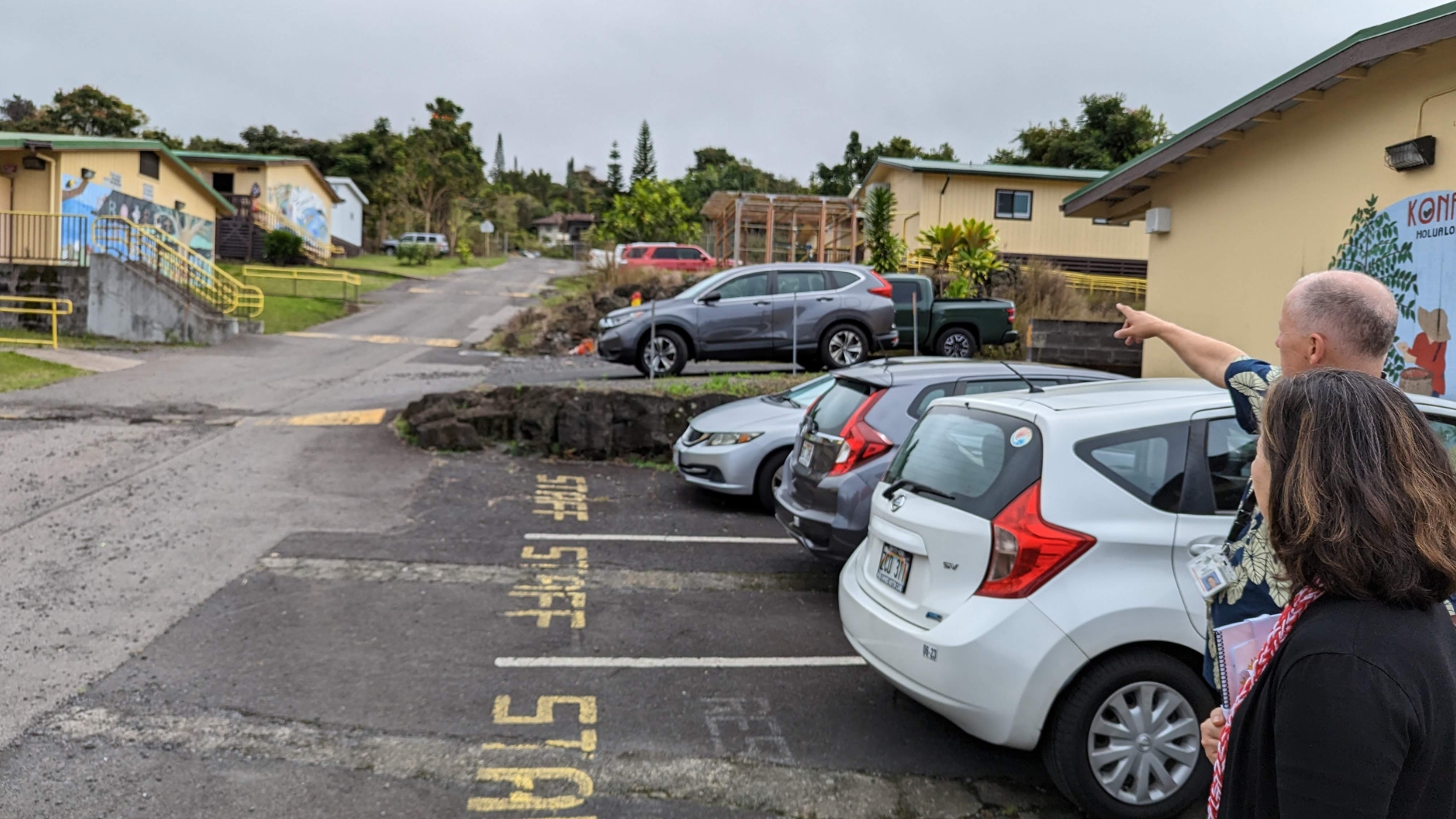Area senator proposes millions in funding for new building, improvements
Posted: February 27, 2023
Just a few days after the Hawaiʻi State Teachers Association disclosed long-time mold, rat and maintenance problems at Hōlualoa Elementary School on Hawaiʻi Island, state school officials began making concrete steps toward some short-term fixes. Meanwhile, the powerful state senator who represents the area has proposed tens of millions in construction spending on longer-term campus improvements.
Shortly after HSTA’s Feb. 20 news conference with teachers and parents speaking out about problems at the school, teachers in Hōlualoa classrooms affected by mold growth were notified they needed to be ready to relocate their classes to other rooms on short notice, signaling that work is expected to begin soon.
Last week, campus custodians began cleaning out two portable classrooms whose students and educators had been relocated to the library and a computer lab because of mold problems. Administrators have told Hōlualoa teachers those two classrooms will be the first to be deep cleaned, have their decades-old carpets removed and floors tiled, and painted with mold-resistant paint.
On Friday, U.S. Rep. Jill Tokuda, who represents rural Oʻahu and the neighbor islands, toured the school along with Hōlualoa Principal Glenn Gray, Honoka‘a-Kealakehe-Kohala-Konawaena Complex Area Superintendent Janette Snelling, HSTA UniServ Director Audra Zook who represents teachers there and HSTA President Osa Tui, Jr., who had already visited the campus in late January.

From left: HSTA President Osa Tui, Jr., U.S. Rep. Jill Tokuda, and a teacher from Hōlualoa Elementary inspect a classroom’s mold damage.
Snelling told the HSTA Friday that the department is operating under the assumption that all classrooms at the school suffer from the same mold problem. Additional classrooms will be addressed during the rest of this school year and during the summer, Snelling said. A schedule based on school priorities is being created by the school’s administrative team, she added.
After the tour, Tokuda, the area congresswoman, said, “We’ve got such amazing educators that are here, trying to do everything they can to be resourceful and resilient so that they can take care of the health of our kids and really provide them with quality education. But all of us have to do more to make sure we’re providing everyone here on the school campus and in the school community with a healthy, safe, and conducive environment in which they can work and they can learn.”
“I’m so glad I got to be here, see things, touch things, if you will, and figure out how are we going to work together to do better for our students, our teachers and educators, and for everyone who works here and calls this place home. So thank you to everyone who made this visit possible. I will definitely be back and be involved,” Tokuda said.
Tui said, “Nobody in the Hōlualoa Elementary school community wants to continue the constant and yearslong worry that their facilities pose a danger to their health.”
“Rep. Tokuda was able see for herself the mold infiltrating classrooms, carpets that haven’t been replaced in decades, the degraded public thoroughfare that splits the school in two, and the termite and seismic damage affecting some of the very dated structures on their campus. We appreciate and share her concern and ask that decisionmakers do everything in their power to cut unnecessary red tape and get these issues addressed without delay for the sake of Hōlualoa’s keiki,” Tui added.
After Friday’s tour, Snelling, the complex area superintendent who oversees the school, met with HSTA’s Zook and Tui, the principal and vice principal on campus.

From left: Honoka‘a-Kealakehe-Kohala-Konawaena Complex Area Superintendent Janette Snelling, HSTA West Hawaʻi UnivServ Director Audra Zook and Hōlualoa Elementary Principal Glenn Gray met Friday at Hōlualoa Elementary.
Zook said she told Snelling, “Teachers don’t trust what the DOE is saying they will do, because they’ve been told the old carpets would be torn out and replaced for at least three years, but nothing has happened. Parents and teachers deserve to know when these projects are going to happen and be completed.”
Zook told Snelling, “I’ve been coming to the school regularly since November, and every time I come here, there are more health and safety issues. When the DOE sends their representatives out here, they are saying that it’s not a big deal. I’m here to tell you that it’s a really big deal. They’re saying that the mold is only going to affect people who have allergies and have underlying health conditions, and it’s not. It’s affecting every person at the school, including the students.”
Teachers are in the middle of a transfer period during which they can apply to change schools, and Zook said some of them are considering leaving the school where problems have persisted for too long.
“Not only is the mold affecting them, but the entire state of the facilities is affecting where they want to be next year. Do teachers want to wait another three years with only promises that the concerns will be addressed?” Zook said.
Earlier this month, before holding a news conference raising concerns about longstanding problems at Hōlualoa, the HSTA sent Snelling, the complex area superintendent, a request for information letter, asking for a timeline of mold remediation plans as well as efforts to:
- Remove paint containing lead throughout the campus
- Install ceiling fans in portables that do not have them, and repair the broken or water-logged fans
- Paint all classrooms with mold-resistant paint
- Repair termite damage throughout the campus
- Repair or replace the walkway ceiling in C building
- Replace rotting stilts that hold up the portable containing the student services coordinator’s office
- Address deep ruts, cracks, and constant debris removal of the public road that runs through the campus
- Address the rodent infestation
- Repair the largest campus bathroom’s structural damage or replace with a bathroom that is structurally sound
- Perform a formal inspection of the foundation concerns in portables and buildings throughout the campus.
To address those many outstanding concerns, Snelling told the HSTA via email Friday that said, “I will be conferring with AS Tanaka (Randall Tanaka, assistant superintendent of HIDOE’s Office of Facilities and Operations), Principal (Glenn) Gray, and our facilities team. I will reach out if clarification is needed.”
State Sen. Dru Kanuha (D, Kona, Kaʻu), who represents the area in the Senate and is the Senate majority leader, has been tracking problems at the school for months.
In January, Kanuha introduced a proposal (SB1575) that calls for about $48.5 million to be spent on various construction projects on the campus, including:
- $26.2 million to plan, design and construct phase one of a master plan for campus improvements,
- $22 million to plan and construct a new two-story building on the campus,
- $300,000 for “construction for the replacement of carpets with tile in C and D buildings,” and
- $75,000 for “construction for the installation of air conditioning throughout the school for mold mitigation.”

